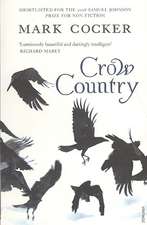The Biology of Xenopus: Symposia of the Zoological Society of London, cartea 68
Editat de R. C. Tinsley, H. R. Kobelen Limba Engleză Hardback – 4 apr 1996
Preț: 839.34 lei
Preț vechi: 1267.82 lei
-34% Nou
Puncte Express: 1259
Preț estimativ în valută:
160.66€ • 174.57$ • 135.04£
160.66€ • 174.57$ • 135.04£
Carte tipărită la comandă
Livrare economică 09-15 aprilie
Preluare comenzi: 021 569.72.76
Specificații
ISBN-13: 9780198549741
ISBN-10: 0198549741
Pagini: 462
Ilustrații: line drawings, tables
Dimensiuni: 160 x 240 x 30 mm
Greutate: 0.92 kg
Ediția:New.
Editura: OUP
Colecția OUP Oxford
Seria Symposia of the Zoological Society of London
Locul publicării:Oxford, United Kingdom
ISBN-10: 0198549741
Pagini: 462
Ilustrații: line drawings, tables
Dimensiuni: 160 x 240 x 30 mm
Greutate: 0.92 kg
Ediția:New.
Editura: OUP
Colecția OUP Oxford
Seria Symposia of the Zoological Society of London
Locul publicării:Oxford, United Kingdom
Recenzii
The book is successful in providing a broad biology of Xenopus with extensive source information. It draws attention to many questions that, through the relative paucity of field studies, still remain.
a wonderful monograph on a fascinating group of frogs, where every chapter manages to amaze the reader with a (thus far mostly unknown) remarkable aspect of Xenopus biology ... The editors have done an excellent job to bring this wealth of information together, in such a structured way that it reads as a single-authored monograph, and a gripping one at that. This book will become a bible for all scientists involved with one aspect or other of research on Xenopus. But I suggest that it should be compulsory literature for every zoologist, as the book tells a convincing story of an animal which has gone its own way and has become most successful in the process.
a wonderful monograph on a fascinating group of frogs, where every chapter manages to amaze the reader with a (thus far mostly unknown) remarkable aspect of Xenopus biology ... The editors have done an excellent job to bring this wealth of information together, in such a structured way that it reads as a single-authored monograph, and a gripping one at that. This book will become a bible for all scientists involved with one aspect or other of research on Xenopus. But I suggest that it should be compulsory literature for every zoologist, as the book tells a convincing story of an animal which has gone its own way and has become most successful in the process.














